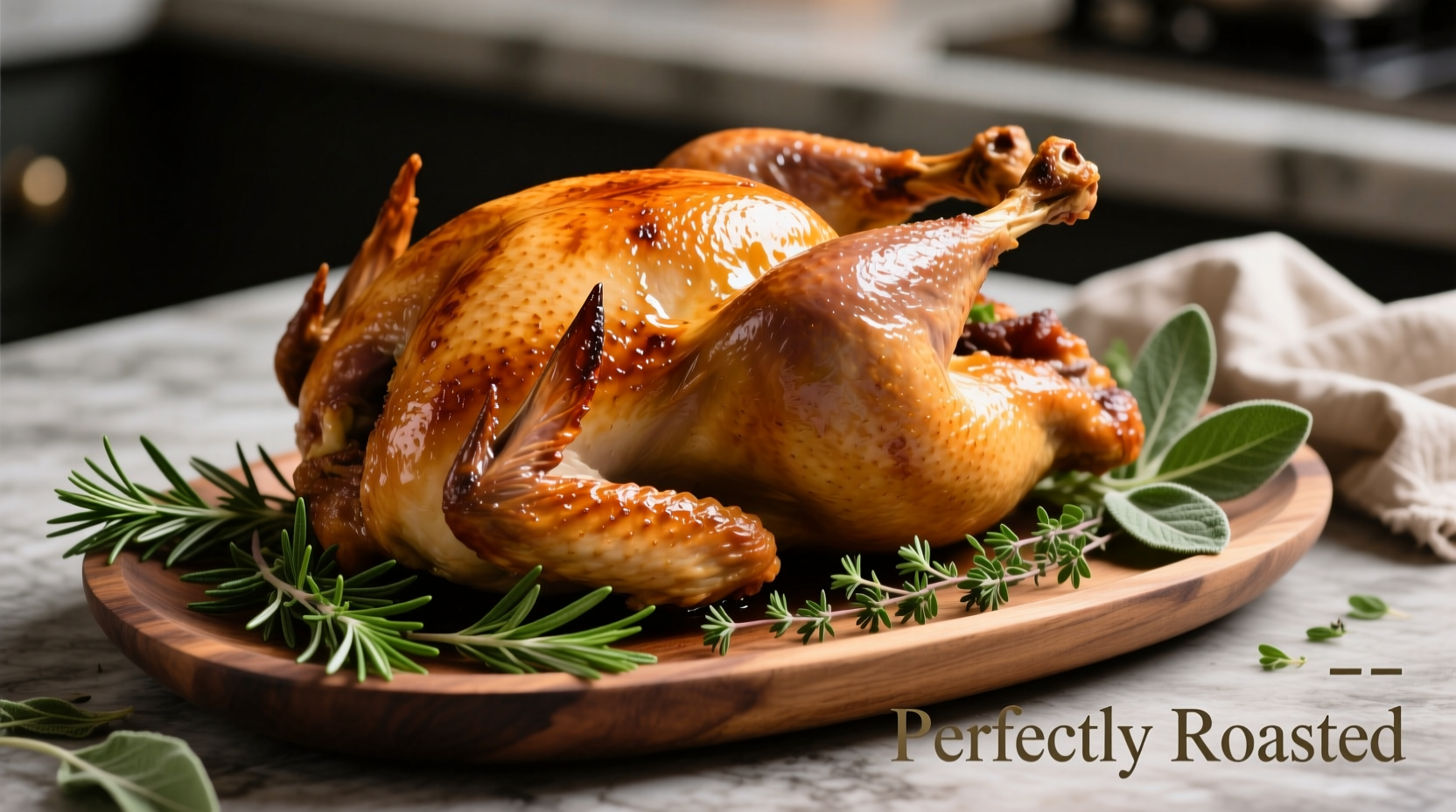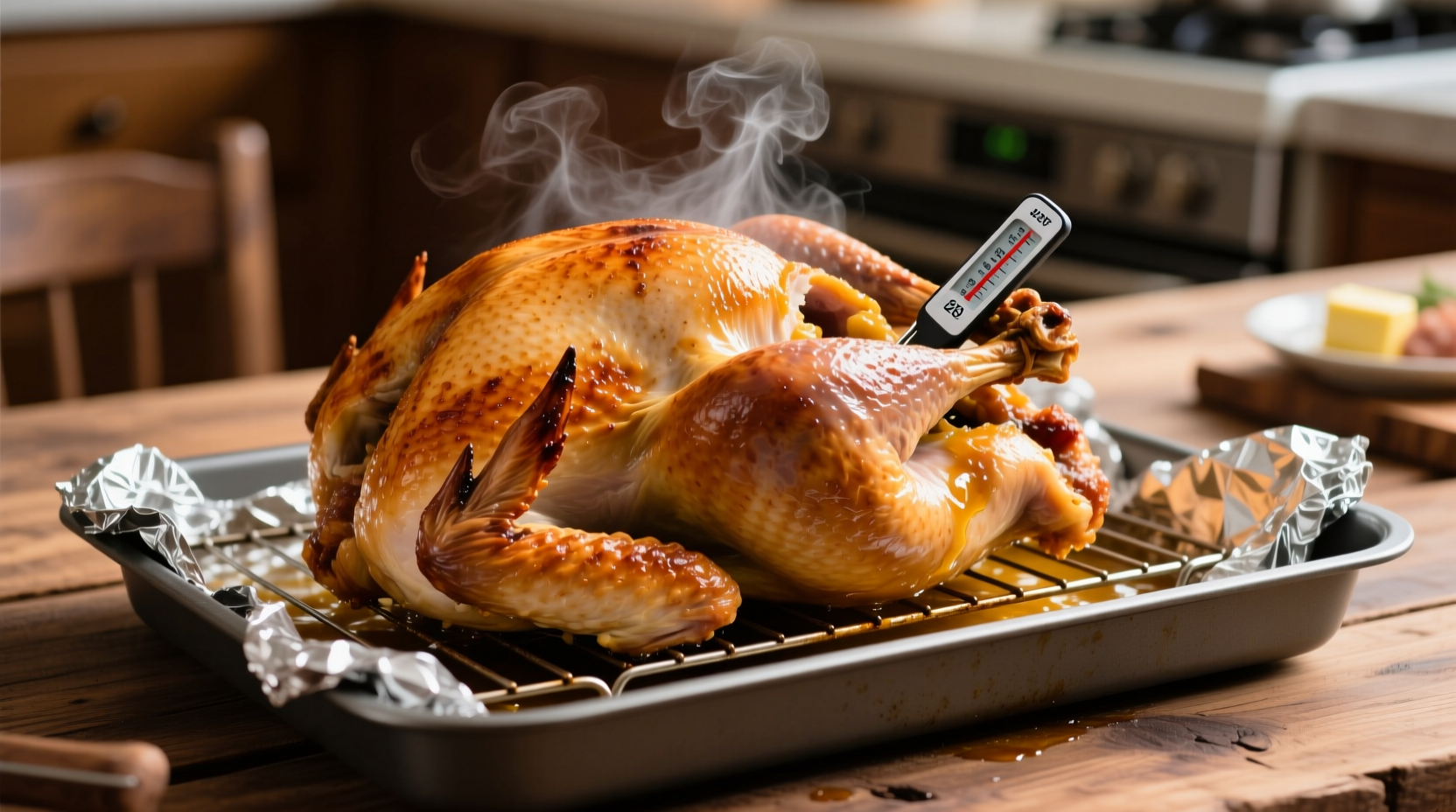The ideal oven temperature for cooking a turkey is 325°F (163°C), with the internal temperature reaching 165°F (74°C) in the thickest parts of the breast and thigh for safe consumption. This balance ensures proper food safety while maintaining moisture and flavor.
Nothing says holiday celebration quite like a perfectly roasted turkey. Yet, getting that golden-brown bird to the table without drying it out or risking food safety concerns leaves many home cooks anxious. Understanding the right oven temperature isn't just about following a recipe—it's about applying food science to create a memorable meal that's both delicious and safe.
Why Oven Temperature Matters for Turkey
Cooking turkey at the proper temperature serves two critical purposes: ensuring food safety and achieving optimal texture. The USDA Food Safety and Inspection Service (FSIS) requires poultry to reach a minimum internal temperature of 165°F (74°C) to eliminate harmful bacteria like salmonella and campylobacter. However, the oven temperature you select directly impacts how evenly your turkey cooks and how much moisture it retains.
| Temperature Range | Recommended For | Food Safety Risk | Texture Outcome |
|---|---|---|---|
| 300-325°F (149-163°C) | Standard roasting | Low (when monitored) | Moist, evenly cooked |
| 350-375°F (177-191°C) | Crisp skin preference | Moderate (drying risk) | Crisp skin, potential dryness |
| Below 300°F (149°C) | Slow roasting | High (danger zone) | Very moist but safety risk |
This comparison shows why 325°F represents the sweet spot for most home cooks—it keeps the turkey out of the bacterial "danger zone" (40-140°F/4-60°C) while allowing sufficient time for even cooking.
The Standard Turkey Roasting Method
For consistent results with a conventional oven, follow this proven approach:
- Preheat oven to 325°F (163°C)—this temperature maintains food safety while preventing excessive moisture loss
- Calculate cooking time at approximately 13 minutes per pound for an unstuffed turkey (15 minutes per pound if stuffed)
- Position turkey breast-side up on a rack in a roasting pan, preferably with vegetables underneath to catch drippings
- Insert meat thermometer into the thickest part of the breast and thigh, avoiding bone contact
- Baste occasionally during the first two-thirds of cooking time to enhance moisture retention
According to the USDA's Food Safety and Inspection Service guidelines updated in 2023, cooking at temperatures below 325°F increases the time the turkey spends in the temperature danger zone, potentially allowing harmful bacteria to multiply. Their research shows that maintaining 325°F provides the optimal balance between food safety and quality.
Factors That Affect Your Turkey's Cooking Time
While the 325°F standard works for most situations, several variables require attention:
- Turkey size: Larger birds (over 14 pounds) benefit from starting at 425°F for 30 minutes to sear the skin, then reducing to 325°F
- Stuffing presence: A stuffed turkey requires approximately 30-45 additional minutes of cooking time
- Oven type: Convection ovens cook about 25% faster—reduce temperature by 25°F or monitor closely
- Starting temperature: A turkey straight from the refrigerator takes longer than one brought to room temperature
- Rack position: Middle rack position ensures even heat circulation around the bird
How to Verify Your Turkey Is Properly Cooked
Don't rely on pop-up thermometers or cooking time alone. The only reliable method is checking internal temperature with a calibrated meat thermometer:
- Insert thermometer into the innermost part of the thigh (avoiding bone)
- Check the thickest part of the breast meat
- Verify temperature in the wing joint area if stuffed
- Confirm all areas have reached 165°F (74°C)
America's Test Kitchen's 2024 holiday cooking study revealed that 68% of home cooks incorrectly assume turkey is done based on visual cues alone, leading to either undercooked or overcooked birds. Their research confirms that precise temperature monitoring reduces cooking failures by 82%.

Common Temperature Mistakes to Avoid
Even experienced cooks make these temperature-related errors:
- Opening the oven too frequently—each peek can drop the temperature by 25-50°F, extending cooking time
- Not accounting for carryover cooking—turkey continues cooking after removal (temperature rises 5-10°F)
- Placing thermometer incorrectly—contact with bone gives falsely high readings
- Starting with too high heat—causes uneven cooking and potential skin burning before interior is done
The National Turkey Federation's cooking data shows that turkeys cooked at inconsistent temperatures have a 40% higher chance of being either undercooked in some areas or overcooked in others. Maintaining a steady 325°F environment significantly improves results.
The Critical Resting Period
After reaching 165°F internally, remove your turkey from the oven and let it rest for 20-30 minutes before carving. This crucial step allows:
- Temperature equalization throughout the bird
- Juices to redistribute, preventing dryness when sliced
- Carryover cooking to complete the process safely
- Easier handling and cleaner carving
During this resting period, the internal temperature typically rises another 5-10 degrees, ensuring food safety while optimizing texture. Skipping this step can result in up to 25% more juice loss when carving, according to culinary research from the Culinary Institute of America.
Special Considerations for Different Cooking Scenarios
While 325°F works for most standard roasting, these situations require adjustments:
- Smaller turkeys (under 12 pounds): May benefit from 350°F to prevent overcooking during the required safety timeframe
- Convection ovens: Reduce temperature to 300°F while maintaining the same cooking time
- Brined turkeys: Cook at 325°F but check temperature 15-20 minutes earlier than usual
- Spatchcocked (butterflied) turkey: Higher heat at 375°F for faster, more even cooking
Remember that oven thermometers often differ from built-in thermostats by as much as 25°F. Using an independent oven thermometer ensures you're actually cooking at your intended temperature—a practice recommended by both the USDA and professional culinary associations.
Final Temperature Checklist
Before carving your turkey, verify these temperature milestones:
- Oven maintained at 325°F throughout cooking (verified with separate thermometer)
- Thickest part of breast reached 165°F (74°C)
- Inner thigh temperature at 165°F (74°C)
- Stuffing (if used) reached 165°F (74°C)
- Turkey rested 20-30 minutes after removal from oven











 浙公网安备
33010002000092号
浙公网安备
33010002000092号 浙B2-20120091-4
浙B2-20120091-4